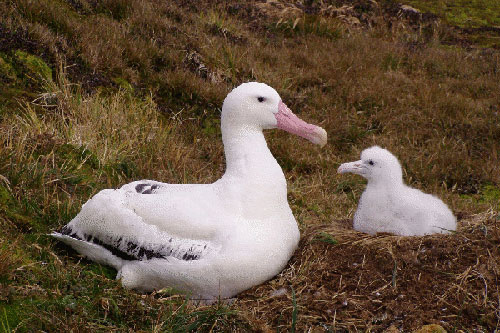Jerome Mardon (Centre d'Ecologie Fonctionnelle et Evolutive, Montpellier, France) and colleagues have studied the olfactory abilities of Wandering Albatrosses Diomedea exulans at their breeding grounds, publishing their findings in the Journal of Experimental Biology last year.
The paper's summary follows:
"Wandering albatrosses routinely forage over thousands of kilometres of open ocean, but the sensory mechanisms used in the food search itself have not been completely elucidated. Recent telemetry studies show that some spatial behaviours of the species are consistent with the ‘multimodal foraging strategy' hypothesis which proposes that birds use a combination of olfactory and visual cues while foraging at sea. The ‘multimodal foraging strategy' hypothesis, however, still suffers from a lack of experimental evidence, particularly regarding the olfactory capabilities of wandering albatrosses. As an initial step to test the hypothesis, we carried out behavioural experiments exploring the sensory capabilities of adult wandering albatrosses at a breeding colony. Three two-choice tests were designed to investigate the birds' response to olfactory and visual stimuli, individually or in combination. Perception of the different stimuli was assessed by comparing the amount of exploration directed towards an ‘experimental' display or a ‘control' display. Our results indicate that birds were able to perceive the three types of stimulus presented: olfactory, visual and combined. Moreover, olfactory and visual cues were found to have additional effects on the exploratory behaviours of males. This simple experimental demonstration of reasonable olfactory capabilities in the wandering albatross supports the ‘multimodal foraging strategy' and is consistent with recent hypotheses of the evolutionary history of procellariiforms."
Reference:
Mardon, J., Nesterova, A.P., Traugott, J., Saunders, S.M. & Bonadonna, F. 2010. Insight of scent: experimental evidence of olfactory capabilities in the wandering albatross (Diomedea exulans). Journal of Experimental Biology 213: 558-563.

John Cooper, ACAP Information Officer, 15 June 2011

 Français
Français  English
English  Español
Español